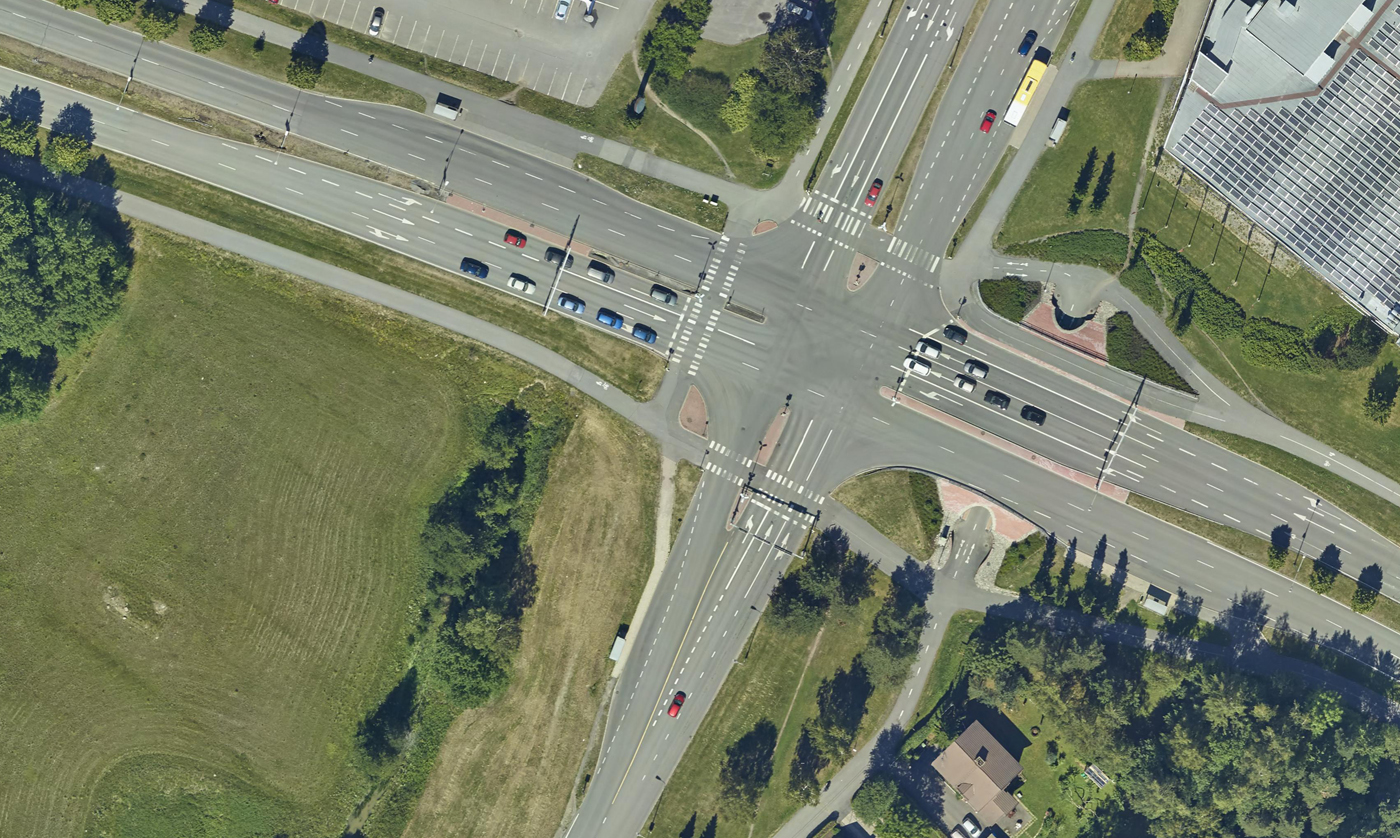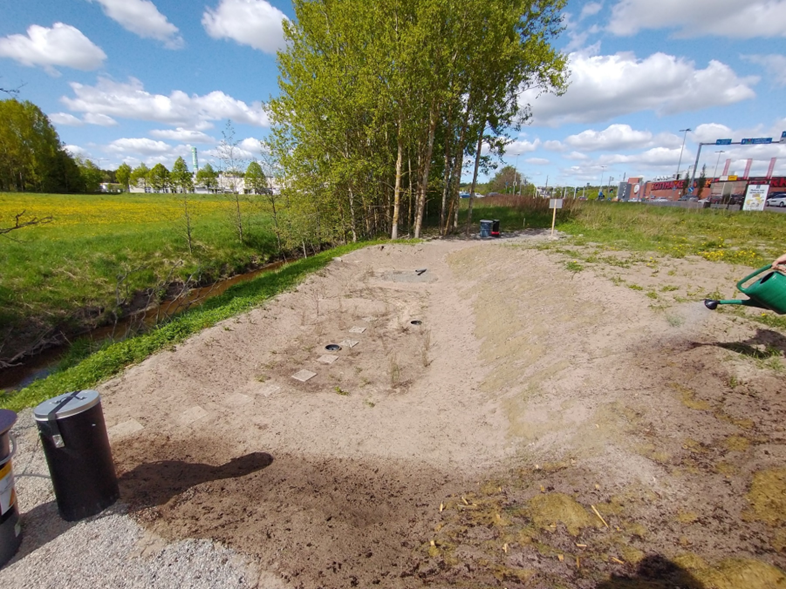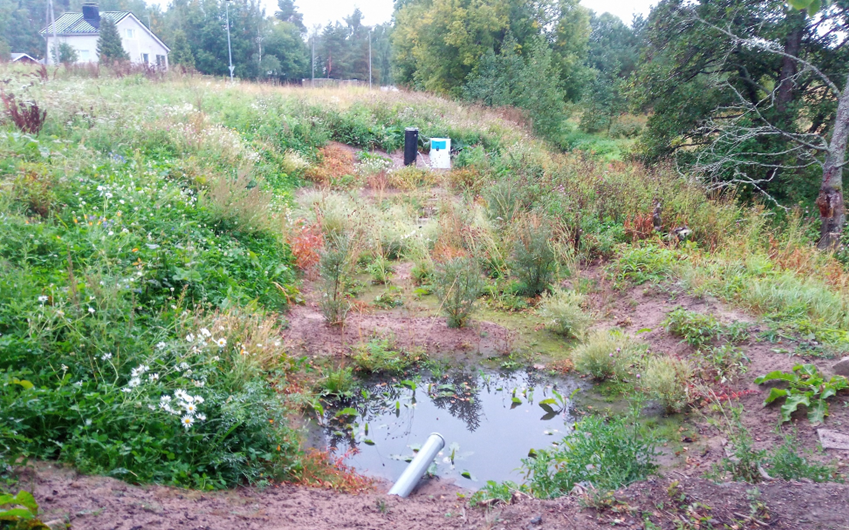Turku City, Finland

Site area: 27m2
Watershed area: 500m2
Inhabitants: –
Spatial planning context:
In Turku, the pilot area is situated near heavy traffic streets alongside green space. The catchment area consists of the road area and drains via stormwater pipelines. The pilot catchment is part of the watershed area of Kuninkoja, which is one of the biggest urban streams in Turku. Kuninkoja serves as an important habitat for many species and has recreational value for citizens bringing more greenery to the grey infrastructure.
Site-specific stormwater challenge:
Watershed area of the pilot site consists entirely of congested streets. In previous studies, water quality issues such as high loads of suspended solids, heavy metals and phosphorus have been observed during the monitoring periods. Also, the water level in Kuninkoja rises quickly during the rain events due to the number of impervious surfaces in the catchment area.
Site-specific stormwater solution:
A bioretention basin was selected to treat stormwater prior to discharge to Kuninkoja stream. Bioretention basin utilizes filter media and plants in the treatment processes.
The pilot site was constructed in the beginning of December 2021 and vegetation was planted in May 2022. The treatment structure is placed alongside the Kuninkoja brook near the earlier outlet of the stormwater pipeline. The stormwater pipe was connected to inlet sampling well, of which the stormwater flow is directed to the bioretention basin. Once the stormwater has passed through the filter media, it is collected in the drainage layer. Before discharging to the Kuninkoja brook the filtered stormwater is directed to the outlet sampling well. Sampling wells are equipped with continuous discharge monitoring sensors and water quality samples are taken during major flow events.
Outcomes
The monitoring period of 11 moths, provided promising results. Bioretention pond in Turku has efficiently retained solids and heavy metals from stormwater. For example, the average reduction percentage for total solids and zinc was over 90 %. However, nutrients were released from the filter medium ending up in elevated orthophosphate and nitrogen concentrations in outlet water during the first half of the monitoring period.

Longitudinal profile of bioretention cell at Turku pilot site.

Bioretention basin after the construction in 10th of December 2021.

Turbid storm water built up on the top of bioretention basin prior to filtration in January 2022.

Bioretention basin after the addition of soil medium and planting of vegetation in May 2022. Irrigation of planted seeds and seedlings may be needed during the first growing season.

Bioretention basin in operation during a rain event in September 2022.



